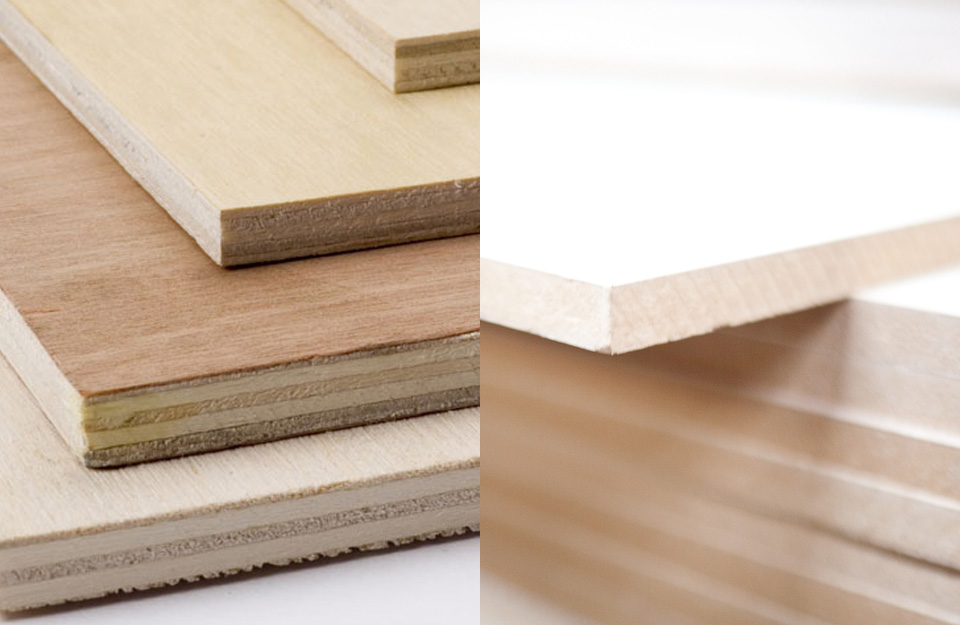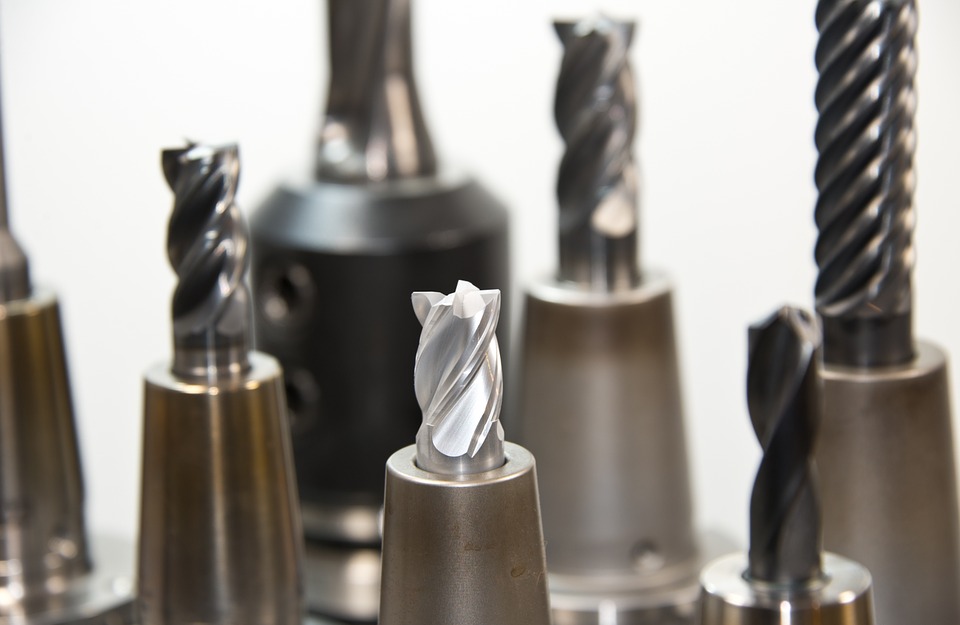News
Plywood vs MDF: Choosing the right material for your next project
Author Chigwell Building & Joinery
Date 31/10/2016
Understanding the difference between the two materials
Both plywood and MDF (Medium Density Fibreboard) are engineered wood products but both have very different traits and applications.
Plywood has been available on the market for a considerable length of time and is still considered to be a very reliable, pliable product for various applications. It is manufactured by binding pressed sheets of wood veneers together using an adhesive bond into one solid sheet, and comes in various thicknesses and species including softwoods and hardwoods such as oak, birch, maple, mahogany and ash to name a few.
Like MDF, plywood is available in various grades and thicknesses, allowing you to choose the correct one for your projects needs.
Lower grade plywoods tends to be used for the interior of house builds whilst higher grade plywoods are used for furniture and cabinets that demand a much nicer finish and grain, as they tend to demand the display of attractive looking knots, wood grain and consistent finishes.
MDF on the other hand is used more as a utility product to build housings, carcasses and structures, rather than the outer shell to be put on show. MDF boards are made from a dense material consisting of broken down hard and softwood residuals, and these fine particles are then pressed with wax and resin bondings under high pressure and temperatures, leaving a smooth, consistent finish.
Side-by-side, plywood and MDF are two very different looking materials and in practical use, are likewise only best used for differing demands.
Advantages of Plywood
• Is very strong and malleable, and made from multiple layers of wood veneers
• More weather and water proof than MDF and won’t absorb moisture as quickly, so less susceptible to damage
• Is stainable so is perfect for projects that demand a high end finish with wood grain on display
• Hold screws and nails very well due to its multiple layered timber structure
Disadvantages of Plywood
• Costs considerably more than MDF and can be fairly expensive when choosing higher grade plywoods
• Requires edge banding or decorative mouldings at the edge due to exposed layers on the sides
• Harder to cut a smooth edge and can split and splinter using more courser cutting blades
• No suited to complex cuts or designs and tends to split or splinter when used with a router
Advantages of MDF
• Is generally a lot cheaper to purchase than plywood
• Has a consistent smooth surface so is ideal for painting and finishing
• Consistent smooth surfaces make it ideal for projects requiring a sharp finished edge
• Easy to cut MDF to size in complex shapes and designs using a jigsaw, router or band saw
Disadvantages of MDF
• Terrible in moist or wet conditions as the particals will soak up water like a sponge and rot
• Doesn’t hold screws or nails well due to its fine particle structure
• Can be extremely heavy and difficult to work with due to its density
• Can’t be stained as the particles will soak up any liquid and leave a very poor finish
• Contains VOCs such as urea-formaldehyde, so care should be taken when cutting or sanding
Which product is right for my project?
The general rule of thumb is, if moisture is an issue, always opt for plywood over MDF every time. MDF will rot very quickly and will disintegrate rapidly if exposed to water over a prolonged period.
With that in mind, MDF is much more suited to indoor projects and is a popular material for those looking to build out cabinets, shelvings and other pieces that will be painted or finished off with mouldings or trims. Never attempt to stain MDF as this will not look good at all. But if you have an intricate design that requires cutting curves and odd shapes, MDF is very suited to this application.
Plywood is more weather versatile as it can be used for both interior and exterior projects. It is generally used to skin doors, as well as a good materials for custom cabinets, flooring and furniture that need a natural wood grain finish. It’s also great for projects that have a curved surface - made very popular during the 80’s at the height of the skateboard halfpipe craze.
Although far more resilient to moisture than MDF, it can still break down over time and delaminate if not treated. Exterior plywood works best if it needs to be used outdoors and regular retreating is advised to prolong its overall finish and life expectancy.
Boards Cut To Size Explained
Author Chigwell Building & Joinery
Date 03/10/2016
Using our online “Cut To Size” custom order facility, we allow customers to purchase complete, full-sized sheets as well as boards cut-to-size to the exact dimensions you require. It is our policy to be as transparent as possible and this is why all costs are displayed on every product we sell.
We know how frustrating it is having to take the time to complete detailed online forms or call and have to wait for email quotations to arrive to purchase specific sized boards and materials, so we’ve gone out of our way to make our order facility as quick and as hassle free as possible.
We hope using our website will be pleasant experience, right from the moment you visit our website, to placing your order and receiving your goods.
How we cut your parts
Once your order is submitted, our internal system receives your project requirements which sends an optimised cutting file to our specialised cutting machines, which are the latest in CNC controlled technology Holzma Beam Saws. These saws are capable of handling exceptionally large parts, with the only limitation being the size of the board.
Note that our online “Cut to Size” service offers straight cuts only. If you require specialist custom shapes, we can accommodate using our 5 Axis CNC machine which has a bed size of 1500mm x 4200mm. We guarantee straight and clean cuts with cutting accuracy +/- 0.1mm.
Part labels are printed automatically during the cutting process to mark your order accordingly. These labels ensure all parts are collected for delivery using label scanners and are delivered safely. This also means you can track and trace your order by unique reference number.
Cutting Limitations: We can not cut parts smaller than 50mm wide. There are no limits on length.
If you have special requirements such as shaped cuts, please contact us for a quotation.
Quotations Explained
General Summary: Figures are shown for the whole job which include, board costs, edging costs, hinge costs and spray finish costs.
Board Summary: All boards used to create your project including costs and cutting time. By clicking on 'Board Preview', you will see how your parts are laid out and make changes to some parts in order to minimise waste. Please bear in mind our saw is 4.5mm thick.
Edging Summary: All edging materials chosen, meters including edging costs calculated as well as Application costs.
Hinges: Number of hinges selected, costs for drilling
Part Summary: Here we display the project selection in detail. You can print or save as a PDF download and check the whole job before adding to cart.




